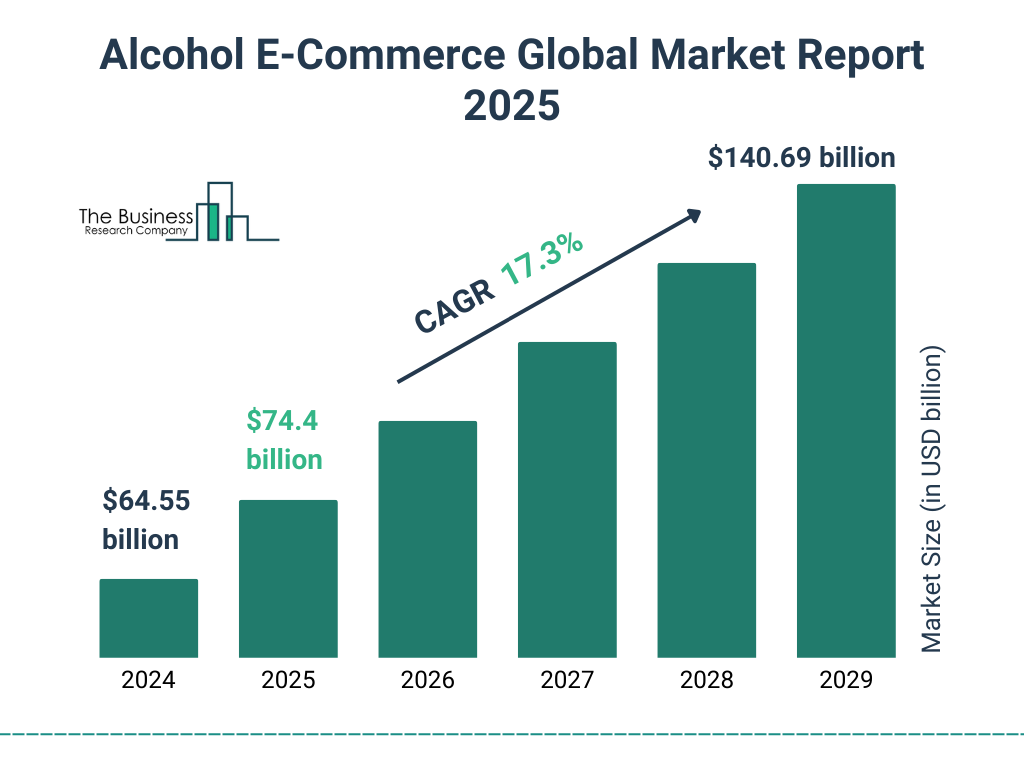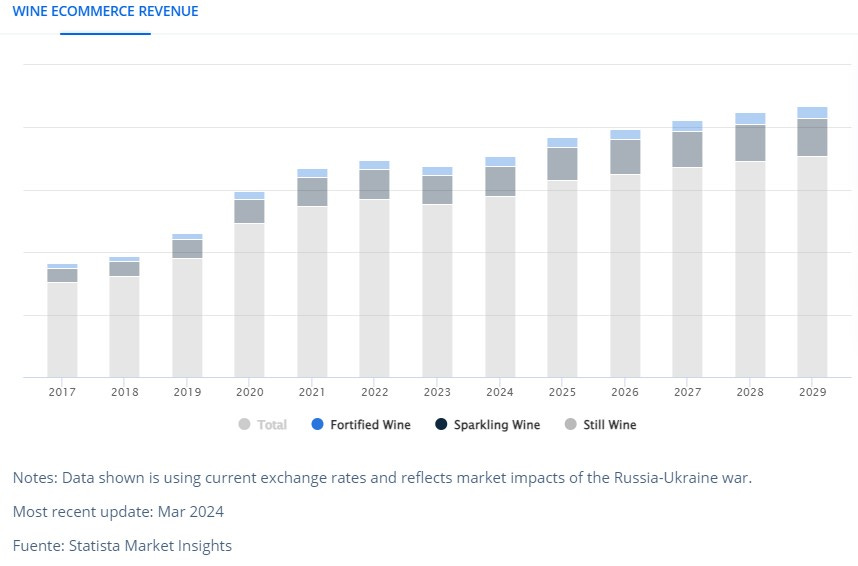This newsletter is not a regular one, and this post comes 4 months after the last one. I'm sorry, but you are my readers and you deserve an explanation. I have a podcast in Italian, called The Digital Wine and you can find it on all platforms, and the blog Storie del Vino, also in Italian. Until a few years ago I went to practically all the wine fairs here in Italy, so I had a lot of material for both the podcast and the blog. In the last two years, however, I have traveled very little, and so most of the material consists of stories about wine, news taken from the web and summaries of reports like this one.
Continuing to be honest with you, subscribers to this newsletter, the reality is that wine is becoming a boring topic, I don't know if it's the same for you (write me down if is the same for you). I like to continue drinking it, of course, but in the end there is nothing new to say. Of course, the threat of US duties on wines (and not only) coming from Europe has given material for three or four posts on each wine blog. I think all wine bloggers and wine writers have written at least 3000 words on the subject of duties and wine. But after that, there is nothing else. Consumption decreases, production decreases, prices increase. Finished. Nothing else. Enough. And so I had nothing more to write, nothing interesting I mean.
So now I have things that are worth writing? Well, I think so, or at least they are things that I think you might be interested in. Of course, you are still subscribed to this newsletter probably because you no longer receive it in your inbox and you didn't even remember being subscribed. I know, I do the same. So, I hope you will give me at least a month, so another three or four newsletters, before you permanently unsubscribe.
Anyway, I am setting up a new project, it is called The Network Chronicles and you can find it on Medium, just follow the link. They are technological news, Internet stories, people who have been protagonists of the growth of the Web. If you want, take a look, and then tell me what you think.
Thanks for continuing to read this newsletter, and sorry for the somewhat long introduction.
After the growth of e-commerce in the pandemic years, the sector is now returning to a more normal trend, in line with previous years. New customers have approached e-commerce, most of whom have remained even after the end of the restrictions, and also new suppliers, namely wineries that at a certain point saw online sales as the only way to remain afloat. Some wineries have abandoned the digital sales channel after the pandemic, but those that have remained have contributed to increasing the market share of this channel.
e-commerce: a growing sector
According to Statista, this sector is continuing to grow, and could go from 6.1 billion dollars in 2024 to 7.6 in 2029, with a total of 328 million people who use this channel to buy their wine.
The data from IWSR (International Wine & Spirits Research) also go in the same direction, obviously with some differences between the various countries. By the way, we are talking about 36 billion dollars in value by 2028 for the e-commerce channel of alcoholic beverages. However, the importance of the digital sector is not measured only by the number of bottles purchased; consumers are increasingly using vertical, specialized platforms as if they were a search engine, looking at prices, discounts, transport conditions and above all the comments of other customers. Therefore they not only improve their online choices, but also their offline ones, showing that e-commerce is not at all the killer of wine shops that was feared when it was born. Indeed, it increases consumer awareness, who continues to trust offline purchasing and is willing, in exchange for better advice, to spend a few more euros or dollars.

As in many other sectors, Europe is lagging behind the rest of the digitalized countries. The IWSR report predicts, but it is only a prediction of course, and therefore can be immediately denied by unexpected geopolitical factors, that the greatest growth will be due to Chinese marketplaces and the US market.
The fastest growth will be that of tequila and whiskey, wine and beer will be the best-selling products in the Chinese online market, which will contribute 1.9 billion dollars of growth until 2028. Social media will be the main purchasing vehicle in China, allowing online purchases between one video, post or reel and another. In the Chinese market, as in the entire Asian one, the advice of influencers will be very important.
Millennials, who until now have not stood out for their online alcohol purchases, should finally enter the market, and the frequency of purchase will increase: already in 2024 there was an increase of 13%.
We have these growths for the most developed markets, China and USA above all, followed by Australia, Brazil and Japan. Italy has so far had the best growth rate, although it should be remembered that it started from a lower level of online sales than others. In any case, the IWSR report confirms an increase in online buyers of about 500,000 people.

About wine marketplaces, a full 24% of consumers confirmed that they use them to search for new labels, making great use of the filter features that each platform makes available. A full 63% of online shoppers do in-depth research, and this often leads to an offline purchase, directly in a wine shop or in a large-scale retail trade.
In summary:
Constant growth of $6 billion by 2028
The growth will be due to the two largest sectors of alcohol e-commerce: Chinese markets and US omnichannel. Even smaller channels will contribute to the value, including those in Australia, Japan and Mexico.
Note: omnichannel means a purchase, from the same seller, both online and offline, for example by taking advantage of wine clubs, online purchase with in-store pickup, in-store purchase and delivery by carrier.
Spirits category to drive future growth
Tequila and whiskey will have the strongest growth, while wine and beer will show steady growth, driven by markets such as China and, in the case of wine, Italy.

China’s Social Commerce
Chinese online marketplaces are likely to remain dominant, contributing $1.9 billion to value growth by 2028. Especially social channels such as Douyin are taking off, combining shopping and entertainment, unlike other markets where social channels for wine are mostly marketing-oriented.
Slow Growth in Smaller Digital Markets
Overall, alcohol e-commerce in less developed markets has further declined. As for the UK, there will still be a decline in sales before it returns to growth, not before 2026. In addition to China and the US, markets that will contribute to growth are Japan, Australia and Brazil.
Marketplace as a Research Tool
63% of online alcohol shoppers conduct in-depth research before making a purchase, a trend increasingly mirrored by offline shoppers.
Inflation and decline in consumption
Inflation levels are holding back consumption, in Europe and the USA, and China is not doing well either. There are several strategies that producers can use to mitigate this situation, for example by pushing towards direct purchasing (DTC). Last but not least, the general decline in consumption, especially among younger consumers of legal age.
The future of wine e-commerce
The digital wine sales sector is also dealing with technological advances, as well as the preferences of wine lovers. Virtual tastings are now a distant memory, but AI-based recommendations are increasingly available, which brings many more purchasing ideas to consumers. Information on the sustainability of production and craftsmanship, understood as low use of external elements, are among the important factors, something that is increasingly highlighted by marketplaces. Even the most ecological packaging systems have their weight in the final choices of the wine lover.




